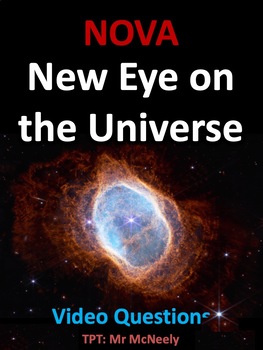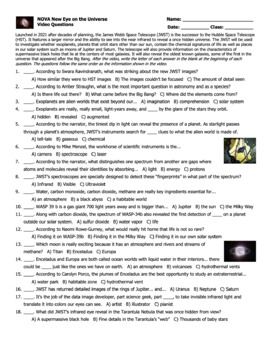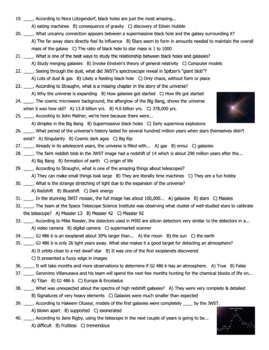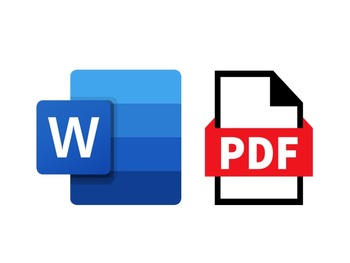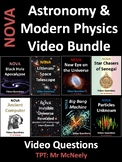NOVA: New Eye on the Universe Video Questions Worksheet
- Zip
What educators are saying
Also included in
- This bundle includes, at a discounted price, video worksheets to accompany eight recent NOVA documentaries that address the remarkable discoveries and experimental machines of modern and ancient physics and astronomy: the James Webb Space Telescope, the Hubble Space Telescope (HST), the ancient GreePrice $13.00Original Price $19.00Save $6.00
Description
Launched in 2021 after decades of planning, the James Webb Space Telescope (JWST) is the successor to the Hubble Space Telescope (HST). It features a larger mirror and the ability to see into the near infrared to reveal a once hidden universe. The JWST will be used to investigate whether exoplanets, planets that orbit stars other than our sun, contain the chemical signatures of life as well as places in our solar system such as moons of Jupiter and Saturn. The telescope will also provide information on the characteristics of supermassive black holes that lie at the centers of most galaxies. It will also reveal the oldest known galaxies, some of the first in the universe that appeared after the Big Bang.
The worksheet consists of 35 multiple choice and matching questions that follow the video, and a key is included. The zip file download features MS Word and PDF versions of the video questions. You will need to obtain a DVD of the video or locate an internet site for streaming.
Other Resources:
A Google Docs version of the video questions is available here. (Note: Access to the Google Doc requires an extra payment.)
A Google Forms self-grading quiz of the video questions is available here. (Note: Access to the Google Quiz requires an additional charge.)
The video is available for streaming on the PBS NOVA internet site. (Please make sure that the video is accessible before purchasing this TPT resource.)
Overview: NOVA: New Eye on the Universe
Launched in 2021 after decades of planning and setbacks, the James Webb Space Telescope (JWST) has become available to use in a variety of astronomical observations. An astronomer in the video compared it to a new souped-up convertible. The first images were released in July 2022, and the amount of detail displayed in them was mind blowing. Besides imaging, the telescope also obtains spectra of distant objects which is important in determining their composition. Webb’s spectroscope reveals patterns in starlight caused by individual chemical elements and molecules. Each pattern is unique and helps to “fingerprint” the element.
The first astronomy problem addressed in the video is the question: Is there life out there beyond the earth? Today, astronomers have identified over 5000 exoplanets in our galaxy. Considering that our galaxy, the Milky Way, contains at least 100 billion stars, the number of planets in our galaxy has been estimated at one trillion. Exoplanets are planets that orbit stars other than the sun. The JWST has been used to detect carbon dioxide and sulfur dioxide in the atmosphere of exoplanet WASP 39 b, a gas giant exoplanet located 700 light years away. These molecules are important component of earth’s atmosphere and biosphere and finding them in the atmosphere of a distant planet is a tantalizing discovery. Another team attempted to detect an atmosphere in earth-sized exoplanet GJ 486 b. The signature of water may have been detected, but the results were not conclusive and will require more observations to confirm.
The JWST is also being used to potentially detect compounds associated with life in Jupiter’s moon Europa and Saturn’s moons Titan and Enceladus. The telescope is being used to monitor and determine the surface composition of Europa’s surface ice which likely covers an immense subterranean ocean of liquid water. Europa could also feature life-promoting hydrothermal vents such as have been found in earth’s oceans. The JWST also discovered an immense plume of water vapor from Enceladus extending over 40 times the moon’s diameter into space. The Cassini mission had observed the plumes of Enceladus in 2015, but the JWST is revealing their great extent. The Webb’s spectroscope can also probe the composition of this watery plume and look for compounds associated with life. Along with detailed images of Jupiter’s swirling cloud bands, the JWST has also delivered stunning views of the rings systems of Jupiter and Neptune which will allow comparison to spacecraft images of the rings taken decades ago.
The JWST has returned incredible images of nebulas, star clusters, and galaxies. In one example, the JWST’s infrared ability revealed a cluster of baby stars in the Tarantula Nebula that had previously been hidden by dust in visible light images. Webb’s images are obtained by taking four different wavelengths of infrared images and translating them into visible light colors. The images are aesthetically pleasing yet still retain the correct science information.
Nearly all large galaxies have supermassive black holes at their centers. Scientists at the California Institute of Technology who study supermassive black holes in galaxies are using the JWST to attempt to explain an uncanny relationship between a galaxy and its black hole. The ratio of a black hole to its galaxy’s star mass is 1 to a 1000. It appears that stars in a galaxy have a connection to the central black hole in a way that cannot be demonstrated by the black hole’s limited gravitational field. Webb was used to examine a supermassive black hole previously imaged by the Spitzer Space Telescope which had a much smaller mirror, 3 feet compared to Webb’s 21 feet. The Webb was able to resolve a blob in Spitzer images into individual components including a feeding black hole.
Telescopes are literal time machines that show us the universe as it was in the past, and the Webb telescope is being used to identify the oldest galaxies in the universe. These were the first galaxies to form after the big bang that created the universe 13.8 billion years ago. After the first light detected in the universe was released, the cosmic microwave background, the universe entered a period known as the cosmic dark ages when no stars had yet formed. A team of scientists at the University of Texas, Austin used a stunning mosaic of deep Webb images to hunt for faint, red galaxies. Galaxies are reddened due to the expansion of the universe. The farther away the galaxy, the redder its light is stretched, so the most distant galaxies appear very red. One faint reddish blob, named Maizie’s Galaxy, may have formed just 290 million years after the big bang. With discoveries such as this, the end of the cosmic dark ages can be better defined. Another team in the video was using well-studied stars in the globular cluster Messier 92 to calibrate Webb’s silicon detectors.
Another Webb result shows that the very earliest galaxies contained more heavy elements than had been predicted by astrophysical models. According to an astronomer interviewed in the video, these models were blown apart by Webb’s observations. The results indicate that either stars formed earlier in the universe, or the rate of star formation was faster than expected. Such results are just the beginning of the amazing discoveries that will likely come from the James Webb Space Telescope in the next few years.

